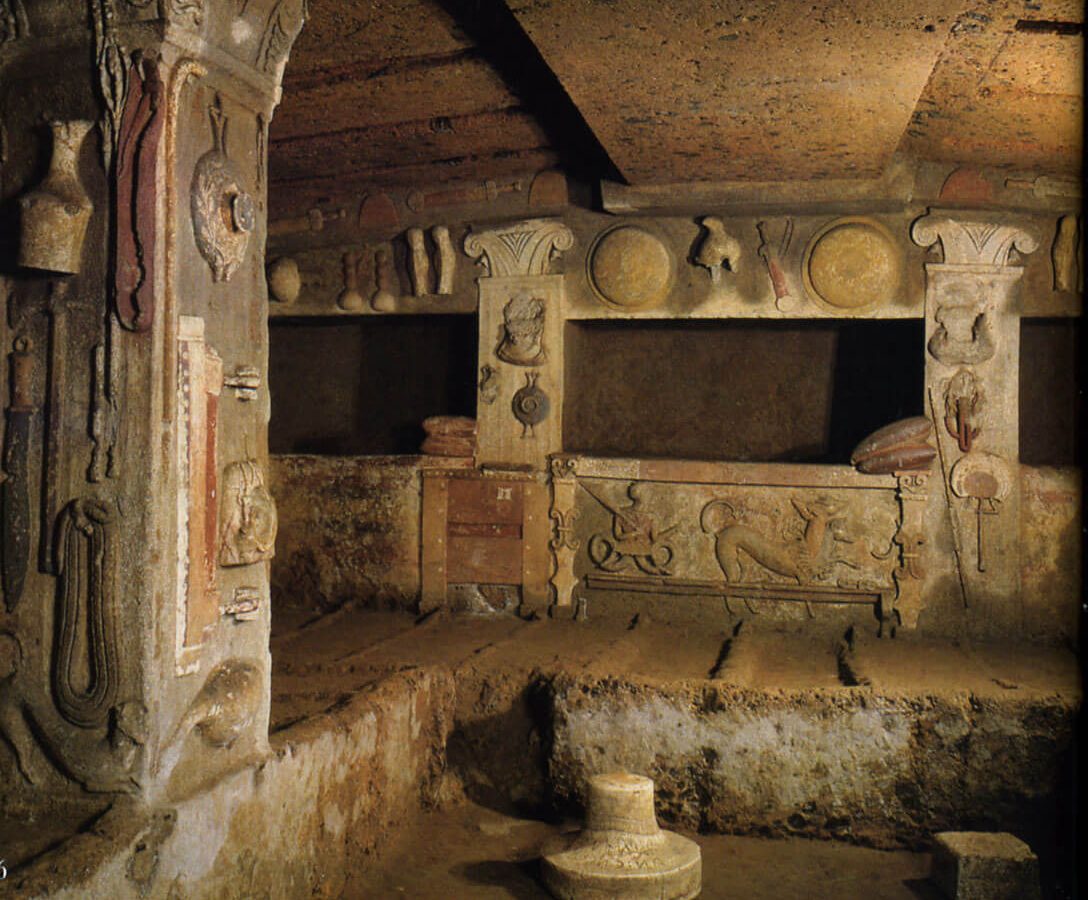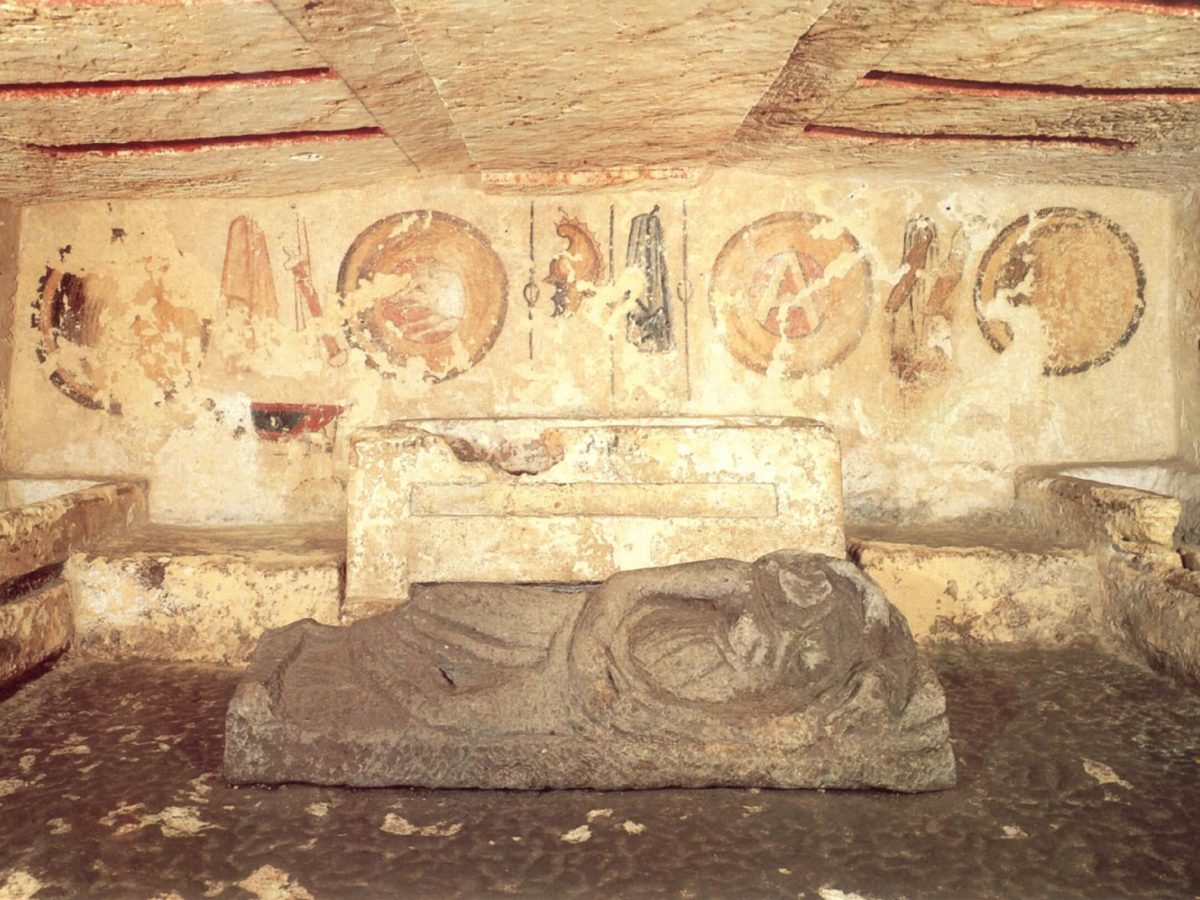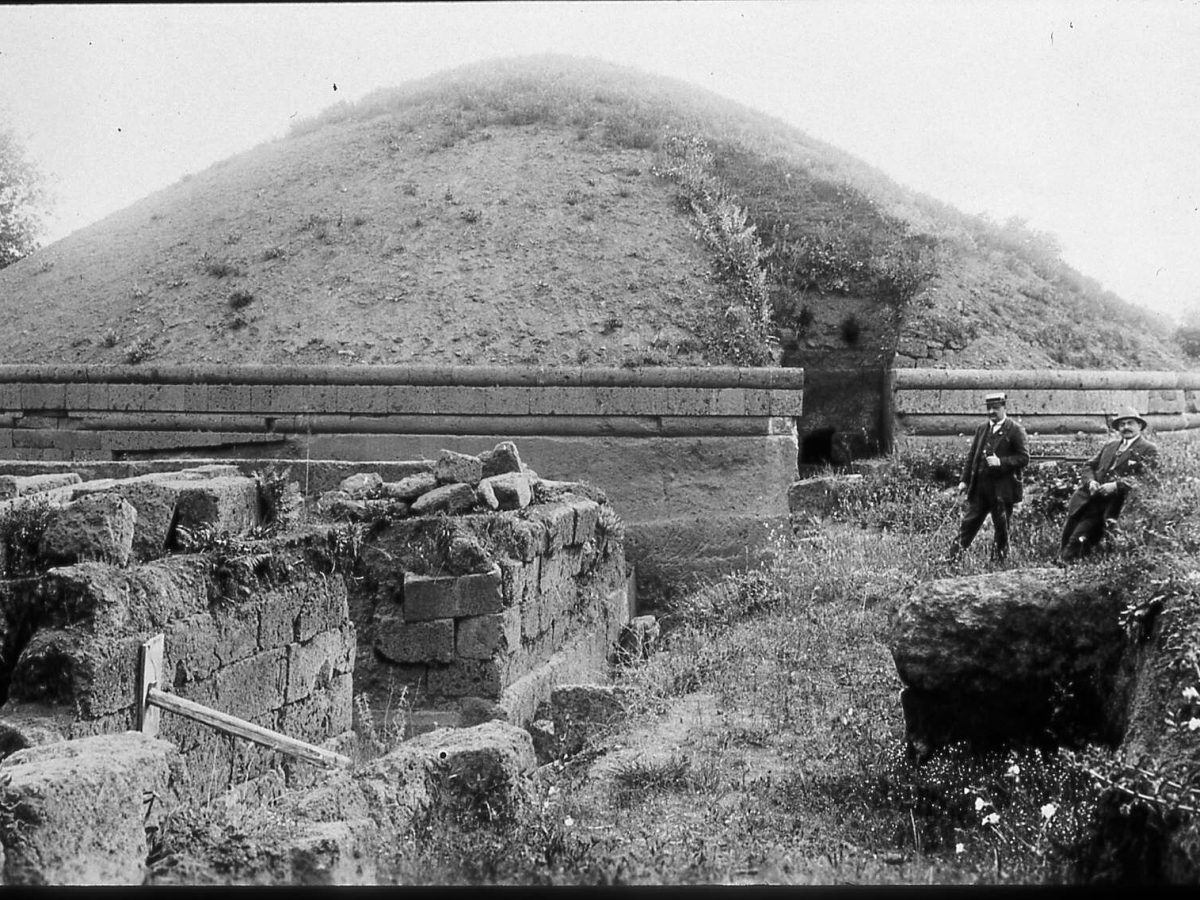The property encompasses the two necropolisesof the Banditaccia and the Monterozzi, the most important cemeteries of the ancient Etruscan city-states of Cerveteri and Tarquinia. These two cities were built near the western coast in central Italy, north of the city of Rome. Together, they have provided the majority of the most significant archaeological discoveries associated with this civilization over a period of nine centuries.
The necropolis near Cerveteri, known as the Banditaccia, contains thousands of tombs organized in a city-like plan, with streets, small squares and neighbourhoods. The 20-hectare site dates from the 9th century BCE and contains very different types of tombs: trenches cut in rock; tumuli which often contain more than one tomb; and some, also carved in rock, in the shape of huts or houses with a wealth of structural details. The Banditaccia necropolis, one of the most extensive in the ancient world, reproduces the “city of the living”. Because there is little surviving written information on the Etruscans, this site provides exceptional testimony of Etruscan domestic architecture from archaic times to the Hellenic period.
The necropolis of Tarquinia, also known as Monterozzi, contains 6,000 graves cut into the rock. Covering 130 hectares, it is the most extensive complex known. Tarquinia is famous for its 200 painted tombs, the earliest of which date from the 7th century BCE. These paintings provide the only major testimony of classic artwork of pre-Roman times existing in the Mediterranean basin.
Together, the Etruscan cemeteries at Cerveteri and Tarquinia offer the sole important attestation of this population that created the first urban culture in the western Mediterranean, surviving for around 700 years, from the eighth to the first century B.C., in that part of central Italy extending from northern Latium to Tuscany.
The necropolises have been known for centuries. Michelangelo visited Tarquina during the Renaissance and a related sketch is held in Florence’s Buonarroti Archives.
The two necropolises and their buffer zones cover a large area – a total of 327 ha and a buffer zone 4,932.11 ha.



